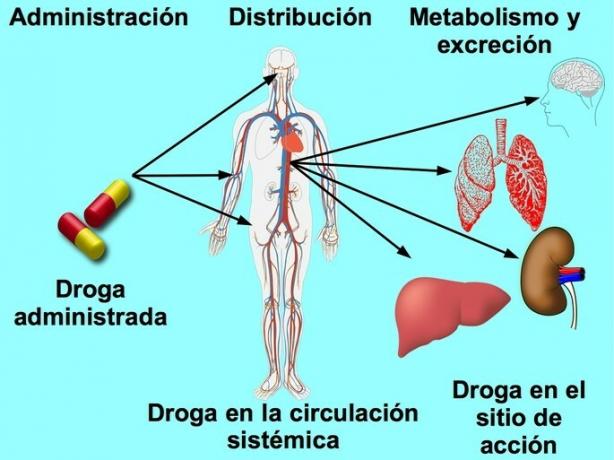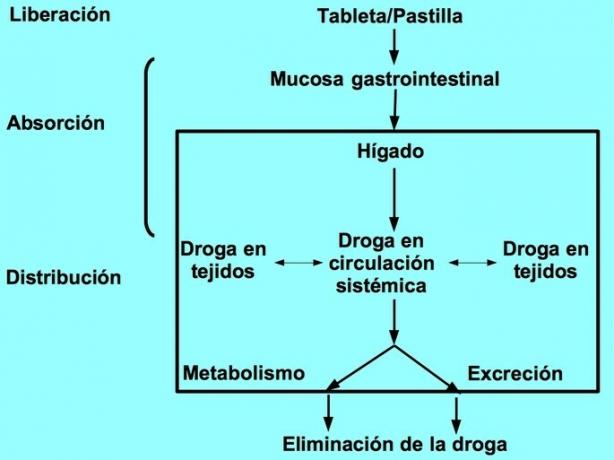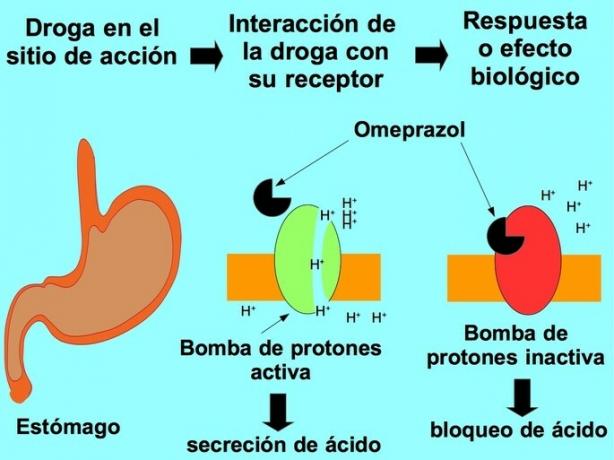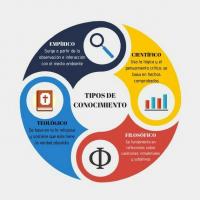Difference between pharmacokinetics and pharmacodynamics
The farmacokinetics is the study of how the body absorbs, distributes, metabolizes and excretes a drug and the pharmacodynamics it is the study of how a drug works in the body.
Both are part of the pharmacology, the science of drugs. It is understood by drugs to those chemical substances that in one way or another alter the biochemical and physiological processes of the human body, for the treatment, cure and prevention of diseases.
| Pharmacokinetics | Pharmacodynamics | |
|---|---|---|
| Definition | Study of the absorption, distribution, metabolism and excretion of drugs in an organism. | Study of the effect and magnitude of response of the drug. |
| Etymology |
Drug ⇒Pharmackon, Greek for dope. Kinetics ⇒kinesis, Greek for movement. |
Drug ⇒Pharmackon, Greek for dope. Dinamia ⇒Dynamis Greek for strength. |
| Processes involved |
|
|
| Relationship | Administered drug dose-blood concentration of drug | Drug-response concentration in blood |
| Takes care of: |
|
|
What is pharmacokinetics?

Pharmacokinetics is the part of pharmacology that deals with the processes involved from the the moment a drug or drug is introduced into an individual until it reaches its site of action in the tissues. It is the study of the movement of the drug in a body, from when it enters, when it is inside and until it is eliminated from the body.
Pharmacokinetics involves the events of:
- Liberation,
- TOabsorption
- Ddistribution,
- Metabolism and
- ANDxcretion of the drug,
known by its acronyms LADME.
Drug release and absorption
Medicines usually come in pharmaceutical preparations, which consist of the active substance of the drug and other manufacturing components. The routes of administration of the drugs can be:
- Oral
- Sublingual
- Intramuscular
- Inhalation
- Subcutaneous
- Rectal
- Topical
- Intranasal
- Subarachnoid
- Intravenous
Once inside the body, the active ingredient is released and the drug absorption process begins. For example, when a tablet is swallowed, it enters the stomach where it disintegrates, dissolves in gastric contents, and the active substance is released.
When the drug dissolves in the gastrointestinal fluid it can pass through the cell lining epithelial cells from the gastrointestinal tract to the portal circulation, the circulation from the intestines to the liver.
First-pass metabolism refers to the initial transformation of the drug in the liver. Once in the circulatory system, the drug has to pass through the liver, which is the main drug elimination organ.
Distribution
Once the drug reaches the heart, it is distributed to all tissues. After absorption of a drug into the systemic circulation via an administration route, the drug is transported by the free body or bound to plasma proteins.
The bioavailability refers to the fraction of an administered drug that reaches the bloodstream. We have 100% availability in drugs that are administered intravenously.
Drug metabolism or biotransformation
Chemical modifications of xenobiotics in the body are called biotransformation, metabolism, or clearance (clearance) metabolic. In general, all biotransformation reactions fall into two categories:
- First-pass metabolism: includes phase 1 reactions, non-synthetic biotransformation reactions, such as oxidation, reduction, hydrolysis.
- Second-pass metabolism: includes phase 2 reactions, synthetic biotransformation reactions, such as glucuronidation, methylation, acetylation, conjugation with amino acids or with glutathione.
Elimination
The main routes of elimination are hepatic metabolism and renal excretion.
Pharmacokinetics Concept Map

What is pharmacodynamics?
Pharmacodynamics is the study of the magnitude of the response to the drug. That is, what is the result, intensity and duration of the effect of the drug and how they are related to the concentration of a drug and its site of action.
Effects of the drug on the site of action
For a drug to fulfill its function, it must bind and / or interact chemically with a target or target molecule, which is known as drug receptor. Once the drug binds to the receptor, the following can happen:
- Opening or closing of ion channels.
- Activation or inhibition of enzymes.
- Activation or inhibition of nuclear receptors.
Mechanisms of action of drugs

The mechanism of action of drugs comprises the biochemical or physiological reaction that is altered in the presence of the drug.
For example, the pharmacodynamics of omeprazole is explained by the fact that the drug binds irreversibly to the enzyme ATPase of potassium protons (proton pump) from the parietal cells of the stomach, thereby blocking acid secretion gastric.
The mechanism of action of adrenaline or epinephrine is through binding to β receptors.2 adrenergic smooth muscle of the bronchi. This produces the dilation of the bronchi. Adrenaline-like drugs, such as albuterol or salbutamol, are used to relieve bronchospasms that occur in asthma.
You may be interested in knowing about Food and nutrition
References
Rosenbaum, S. Basic Pharmacokinetics and pharmacodynamics: an integrated textbook and computer simulations. John Wiley & Sons. 2011.



